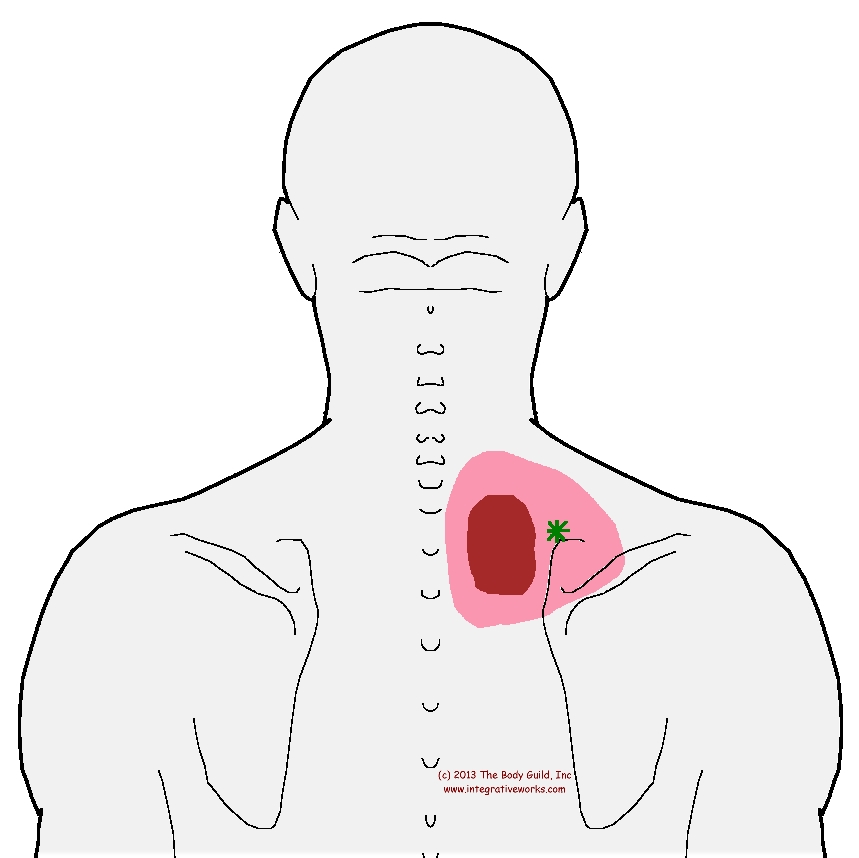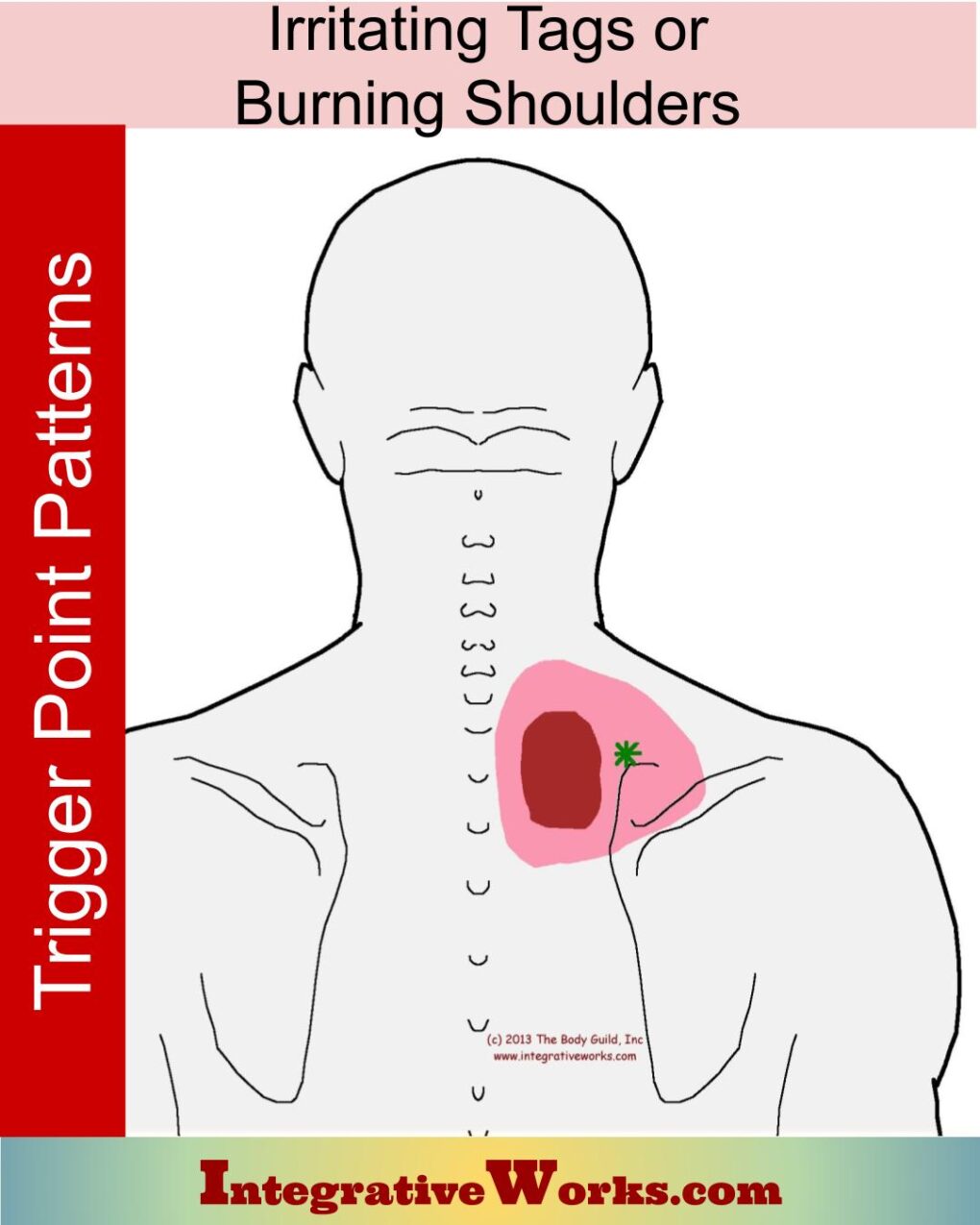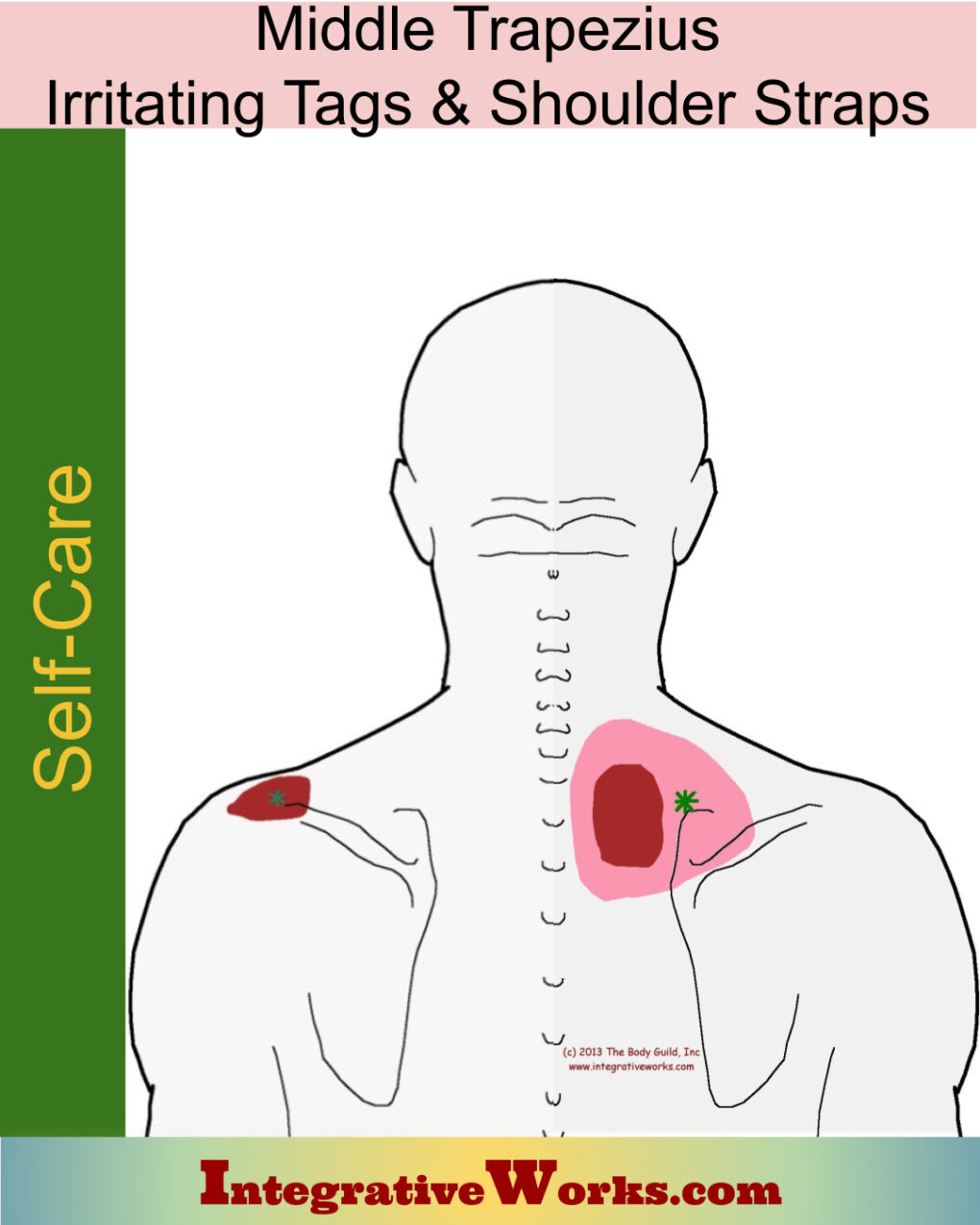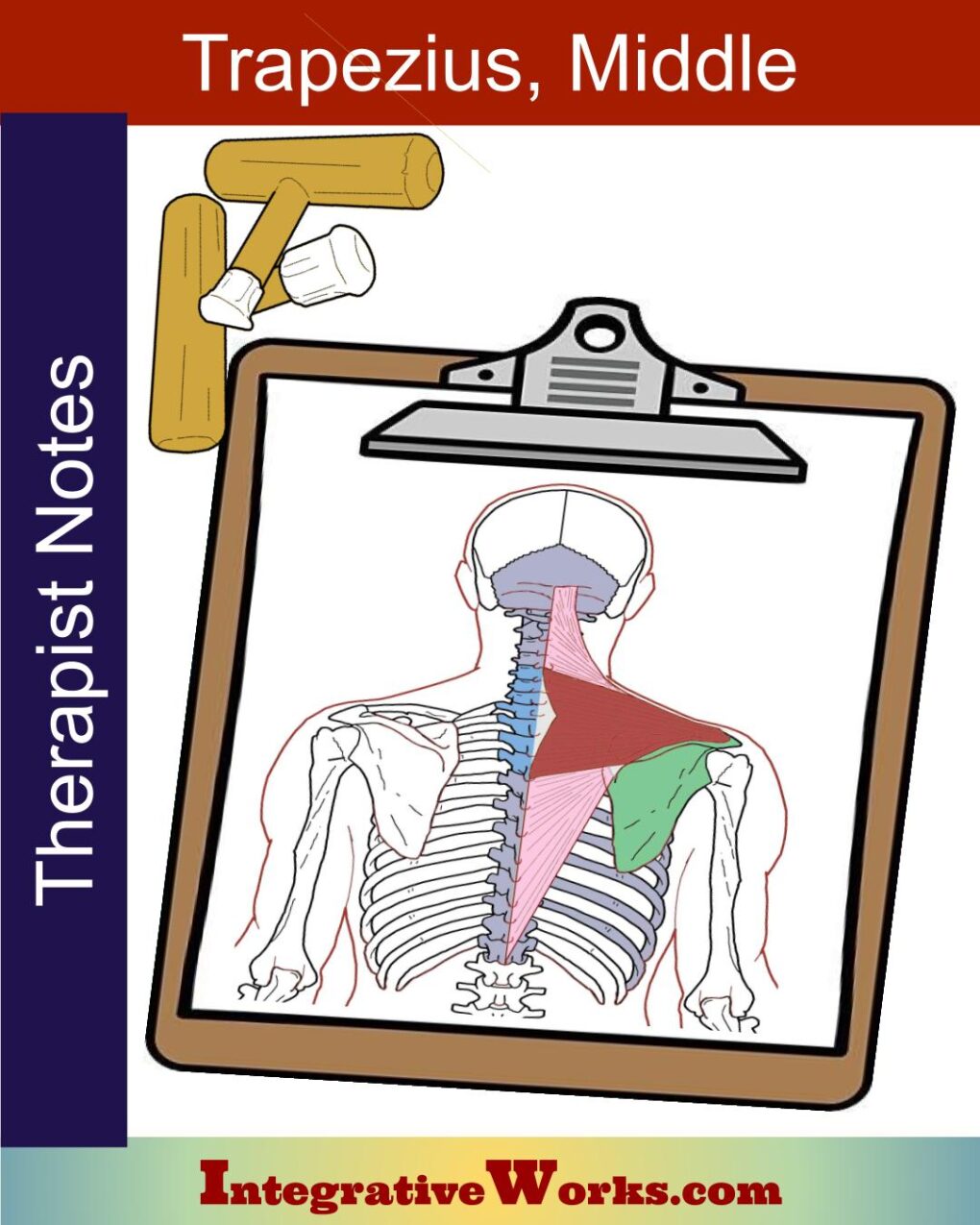Table of Contents
- How People Describe This Pain Pattern
- How You Activate and Intensify This Pain Pattern
- Self-Care – Getting Relief on Your Own
- Musculoskeletal Anatomy Behind Your Pain
- Therapy Notes for Massage and Bodywork
How People Describe This Pain Pattern

People complain about the tension between the shoulder blades. There are a lot of things that create tension here, so I press on for more specific information. It is not likely that they came in for a massage because their tags are bothering them, So I ask about the tags when they complain of shoulder tension. They will admit that tags in their shirts bother them. They will complain about the burning when it is really aggravated.
This trigger point was an interesting part of my work with special needs children in the mid-90s. I was writing a book on trigger points and working with children with a sensory processing disorder. This was the first trigger point that I associated with a sensory processing disorder. After this, I found trigger points related to their typical issues, like sensitivity to seams in their socks, pervasive fight-or-flight, low muscle tone, hypertonicity, etc. Learning to create lasting relief from these trigger points through cranial work allowed me to make significant differences in their ability to regulate.
How You Activate and Intensify This Pain Pattern

Leaning on Elbows
Lifting the shoulders up and back in a shrugging motion tightens this muscle. I work near Emory University. Every day, I see students in coffee shops who sit for hours in this posture. As they lean on their elbows while working on their laptops, they create chronic tightness in the shoulder girdle. Held for hours, it tightens the muscle fibers of the middle trapezius and serratus anterior. As they walk away, their shoulders are high and tight, like they are still sitting there.
Shoulder Work
A lot of things shift to support these high, tight shoulders. In many cases, people don’t have irritating tags and burning shoulders, except when the shoulder is dropped or pulled. For me, it gets activated when I’ve jerked dumbells or haul blocks to build something in the yard. Clients are more likely to complain about dogs or suitcases that pull on their arms.
Creates Anxiety
This trigger point also feeds irritation to the sympathetic ganglion. Ok, in layman’s terms, that means it makes you feel anxious and irritable. They may unconsciously lean to take the tension off this irritating trigger point. It is a common problem among special needs kids who have sensory processing disorder.
The Musculoskeletal Anatomy Behind Your Pain
Musculoskeletal Anatomy
This post on anatomy contains standard information about the origin, insertion, function, and innervation of muscles. Additionally, it includes information on functional considerations and anomalies.
Find Related Posts
Anatomy posts have a grid of all related posts. This includes posts on pain patterns, self-care, therapy notes, NMT protocols, cranial techniques, and cases.
Getting Relief on Your Own
Clinically Proven
Self-Care Strategies
Self-Care Posts have common sections to make them easy to follow and understand:
- Activities to Avoid or Change
- Strategies for Quick Relief
- Stretches and Exercise for Longer-Lasting Relief
- Yoga Corner
Therapy Notes for Massage and Bodywork
Better Bodywork
Through Shared Expertise
This post has techniques, tips, treatment routines, and anatomy illustrations to improve the bodyworker’s approach.
Support Integrative Works to
stay independent
and produce great content.
You can subscribe to our community on Patreon. You will get links to free content and access to exclusive content not seen on this site. In addition, we will be posting anatomy illustrations, treatment notes, and sections from our manuals not found on this site. Thank you so much for being so supportive.
Cranio Cradle Cup
This mug has classic, colorful illustrations of the craniosacral system and vault hold #3. It makes a great gift and conversation piece.
Tony Preston has a practice in Atlanta, Georgia, where he sees clients. He has written materials and instructed classes since the mid-90s. This includes anatomy, trigger points, cranial, and neuromuscular.
Question? Comment? Typo?
integrativeworks@gmail.com
Interested in a session with Tony?
Call 404-226-1363
Follow us on Instagram

*This site is undergoing significant changes. We are reformatting and expanding the posts to make them easier to read. The result will also be more accessible and include more patterns with better self-care. Meanwhile, there may be formatting, content presentation, and readability inconsistencies. Until we get older posts updated, please excuse our mess.






Comments are closed.